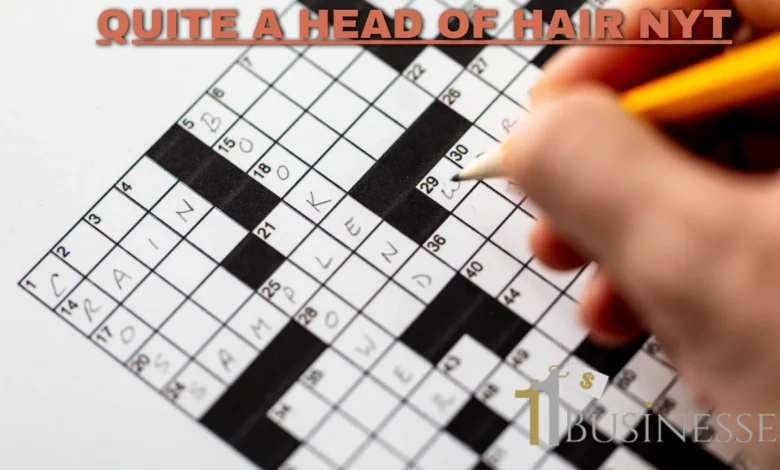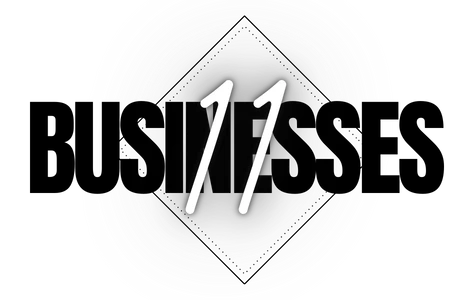Quite a Head of Hair NYT: The Story Behind the Striking Hairstyles in NYT

In the New York Times (NYT) feature titled “Quite a Head of Hair NYT,” we explore the fascinating world of unique and distinctive hairstyles that tell personal stories and reflect cultural heritage. Hair is more than just a physical feature—it’s a powerful form of self-expression, confidence, and identity.
This article highlights the diverse ways people wear their hair and the significance it holds in their lives.
Through the lens of the NYT, we dive into the cultural, emotional, and personal importance of hair, offering insight into the pride and dedication people have for their unique looks.
What Does “Quite a Head of Hair NYT” Mean?
The phrase “Quite a Head of Hair NYT” is often used to describe someone with a thick, luscious, or unique hairstyle. It could be curly, voluminous, or just well-groomed and striking.
In popular culture, hair plays a major role in how people are perceived, and having “Quite a Head of Hair NYT” can signify beauty, health, or even personal style.
The New York Times (NYT) often covers interesting human stories, and their feature on unique hairstyles captures readers’ attention by celebrating this symbol of personal identity.
The article not only examines the beauty of hair but also the cultural and personal stories behind these distinctive hairstyles.
Why is Hair Important to Our Identity?
Hair is a deeply personal feature that reflects one’s culture, background, and personal preferences.
For many people, their hair represents who they are, and it can be linked to their heritage or traditions.
Hairstyles often evolve as trends change, but some stick with a specific look because it defines who they are.
Hair can also indicate one’s health, lifestyle, and even their profession. In the NYT’s story, we see how hair not only frames the face but also speaks to a person’s journey in life.
How Does Hair Influence Perception?
Hair has a significant impact on how people are perceived by others. Whether long, short, curly, or straight, our hairstyle is one of the first things that others notice. People often form opinions about someone’s character, style, or even personality based on their hair.
A person with “Quite a Head of Hair NYT” might stand out because their hairstyle is bold or unusual, causing others to take notice.
In the NYT article, this perception of hair is explored through various personal stories, showing how people’s hair shapes their interactions with the world around them.
What Role Does Hair Play in Cultural Representation?
Hair plays an essential role in cultural expression and representation. Different cultures have specific hairstyles that symbolize tradition, status, or beliefs.
In some cultures, long hair is a sign of beauty, while in others, short or shaved hair could represent wisdom or spirituality.
The NYT feature highlights how people from various backgrounds express their cultural identity through their hair. This connection between hair and culture is important as it helps individuals feel connected to their roots, allowing them to take pride in who they are.
How Does Hair Affect Self-Esteem?
Hair can significantly affect how we feel about ourselves. Having healthy, well-maintained hair can boost confidence, while a bad hair day can make someone feel self-conscious.
People often invest time and money into caring for their hair to make sure it looks good because it is closely linked to how they present themselves to the world.
The NYT article shares stories of people who have gained confidence through their unique hairstyles, illustrating the strong link between hair and self-esteem.
For many, their hair is an extension of their personality and an outward expression of how they feel about themselves.
Why Is Hair Care Important?
Taking care of hair is important for keeping it healthy, shiny, and manageable. Hair care routines vary greatly depending on hair type and texture, but they all have one goal: to make hair look its best.
Good hair care can prevent issues like dryness, breakage, and frizz, which can be frustrating to deal with. Regular washing, conditioning, and using the right products can make a big difference in the overall appearance and health of one’s hair.
In the NYT article, some of the featured individuals discuss their hair care routines, highlighting the importance of taking care of this natural asset.
What Are the Challenges of Maintaining Unique Hairstyles?
Maintaining a unique or elaborate hairstyle can be challenging. Many hairstyles require time, effort, and sometimes expensive products to keep them looking good.
For example, curly or textured hair often needs special products to prevent frizz and keep the curls defined. Those with dyed or chemically-treated hair also face challenges in maintaining the health of their hair, as chemical treatments can cause damage over time.
In the NYT feature, individuals with unique hairstyles talk about the work they put into maintaining their looks, showing that having “Quite a Head of Hair NYT” can come with its own set of responsibilities.
How Does the NYT Capture the Personal Stories Behind Hair?
The NYT article goes beyond just celebrating interesting hairstyles—it dives into the personal stories behind them.
By interviewing people about their hair journeys, the feature uncovers how something as simple as hair can have a profound impact on someone’s life.
For some, their hairstyle is a way to honor their culture or heritage, while for others, it is a way to express their individuality or personality.
The NYT’s focus on these personal stories adds depth to the feature, making it clear that hair is more than just a physical trait—it’s a window into a person’s identity.
What is a Abadtration and How Does It Relate to Hair?
Though the term “what is a abadtration” might seem unusual in a hair-related context, it can represent a way to describe something distinct or out of the ordinary.
In the NYT article, each hairstyle featured could be considered a form of “abadtration,” as it stands out from the norm and is a true reflection of individuality.
When it comes to hair, people often push the boundaries of what is traditional, creating truly unique styles. This spirit of breaking away from the ordinary is reflected in the NYT’s celebration of people who proudly wear their hair in bold, unconventional ways.
How Does Hair Reflect One’s Personal Journey?
For many, their hairstyle reflects where they have been in life and where they are going. Hair often changes with major life events—people may cut it short after a significant experience or grow it out as they embark on a new chapter of their lives.
The NYT article captures this idea beautifully by showing how different hairstyles tell a person’s story.
Whether someone has embraced their natural hair after years of straightening it, or they have found a style that perfectly matches their personality, hair becomes a visual representation of their personal journey.
Pros and Cons of Unique Hairstyles
| Pros | Cons |
| Self-expression | High maintenance |
| Cultural significance | Time-consuming upkeep |
| Boosts confidence | Can be expensive to maintain |
| Creates a distinctive personal look | Requires special care products |
| Connects to heritage | Can attract unwanted attention |
FAQs
What does “Quite a Head of Hair NYT” mean?
The phrase refers to someone with a striking or distinct hairstyle that stands out, whether because of its volume, uniqueness, or personal style.
Why is hair important to cultural identity?
Hair is often tied to a person’s cultural heritage, symbolizing tradition, status, and beliefs, and serving as a powerful marker of identity and expression.
How does hair affect self-esteem?
Healthy, well-maintained hair can boost confidence, while bad hair days can make people feel self-conscious, as hair is often a reflection of personal care and style.
What challenges come with maintaining unique hairstyles?
Unique hairstyles often require more time, effort, and specific products to maintain, and can be expensive or time-consuming to upkeep.
What is a abadtration and how does it relate to hair?
“What is a abadtration” may seem unusual, but it symbolizes something distinct or out of the ordinary, much like the unique hairstyles featured in the NYT article.
Conclusion:
“Quite a Head of Hair NYT” is more than a phrase—it represents individuality, culture, and personal journeys.
The New York Times’ feature sheds light on the diverse stories behind these unique hairstyles, showing that hair is a form of expression tied deeply to identity, confidence, and heritage.
While maintaining such styles can come with challenges, the pride and confidence that come with them are worth the effort.
Through these stories, we see how something as simple as hair can hold so much meaning and tell stories about who we are.




